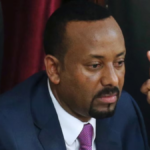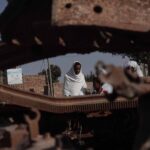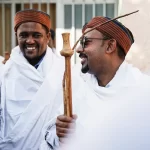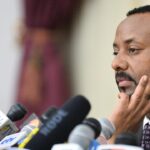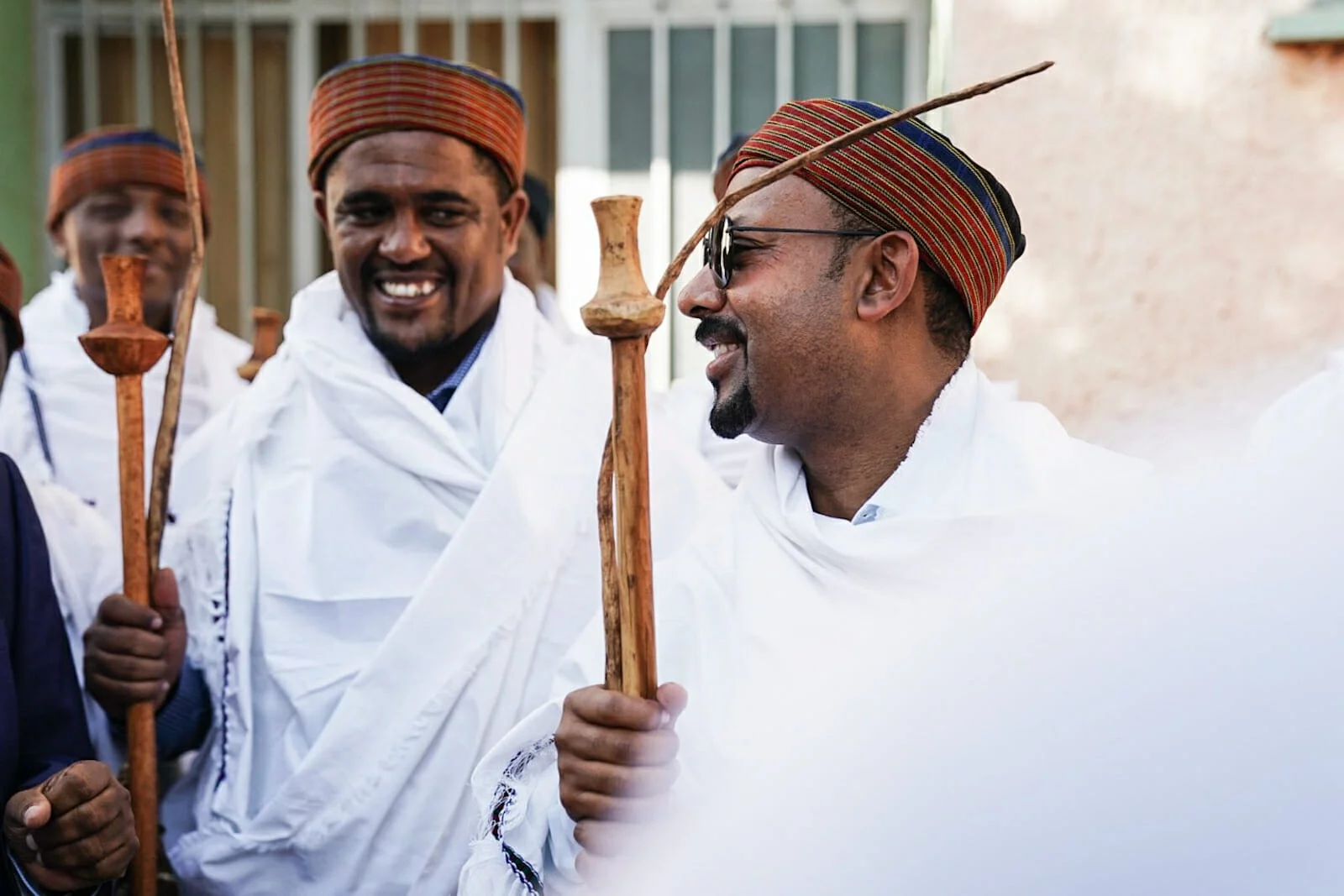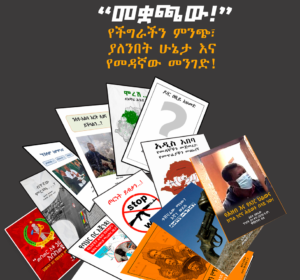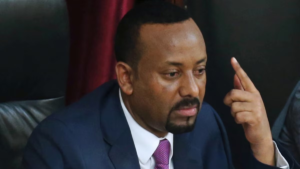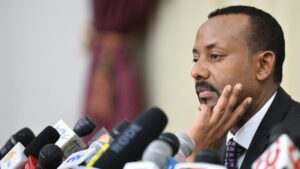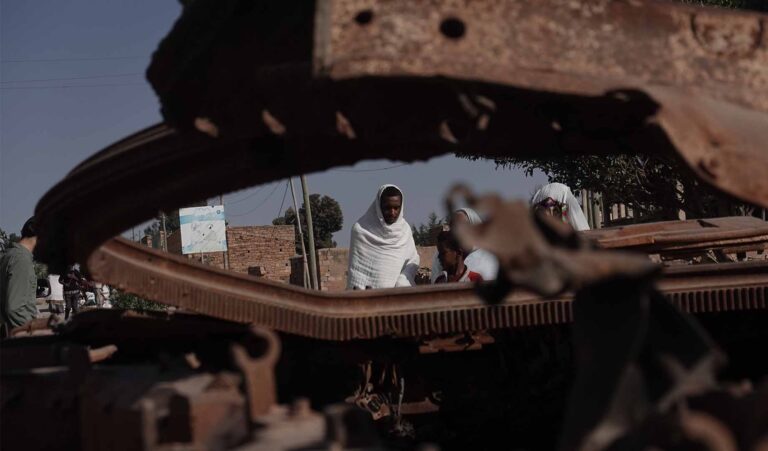Press Release by Oromos for Justice, Security, and Truth (O-JUST) (O-JUST is a group founded by concerned Oromos in Ethiopia.)
Background
The notion that the incumbent Ethiopian government is an “Oromo government” emerged
in April 2018 following the ascension to power of Abiy Ahmed Ali, the incumbent Ethiopian
prime minister. The Oromo Protest that commenced in November 2015 ended authoritarian
rule, occasioned a democratic transition, and paved the path to power for the prime minister.
Because he rode the wave of Oromo Protest to power, his rise was popularized as the first
Oromo prime minister, even though the statement was verifiably inaccurate. The
international media extolled him as a reformist leader with widespread support in the
country.
The Oromo national movement was a demand-driven movement with a distinct
agenda for the Oromo people in Ethiopia. It was never a personality-centered political force
aiming to coronate an Oromo-speaking person. It certainly did not have the goal of bringing
to power a leader of the Oromo People’s Democratic Organization (OPDO), an ostensibly
Oromo political party with dubious origins and history.
When the latest phase was expressed in 2008 in the form of the Oromo Protest, the
movement demanded constitutionally guaranteed self-rule, property ownership, and
identity rights. They were fair, legal, and moral demands consistent with those of Ethiopia’s
other nations and nationalities. The prime minister was entrusted with the mandate to serve
the remaining term in office of the Ethiopian People’s Revolutionary Democratic Front
(EPRDF) until free, fair, and competitive elections were held and a legitimate government
was established.
Ignoring the reality of the Oromo movement and the nature of his mandate, the Abiy
regime invented a narrative that an Oromo had taken power. Then, he used the narrative to
neutralize opposition within the Oromo, claiming Oromo demands had already been
answered. At other times, he discreetly deployed to mobilize them to “protect the Oromo
government” against hostility from non-Oromo Ethiopians.
The Rhetoric: Building the Myth of an Oromo Government
The prospect of democratic transition engendered a euphoric national feeling that the days
of the despot were gone and that the era of popular will had arrived. The domestic and
international media headlines unscrupulously kept pushing the utterly false narrative that
an Oromo had taken over power for the first time in Ethiopian history. In reality, at least six
persons of Oromo lineage have served either as president or prime minister since the end of
the imperial regime in 1974. But history was eclipsed by a false narrative, paving the way for
the creation of the Oromo government myth, a sinister ploy designed to reduce the Oromo
national movement to a quest for a political office.
The narrative was taken to the next level by the most ardent and certified Oromophobes in
the country. Mesfin Woldemariam, the dean of anti-Oromo rhetoric, elevated the prime
minister to a demigod status, calling him a “divine gift with unparalleled intelligence.” Daniel
Kibret, the foul-mouthed cleric known for his crass and vulgar language, called him a
millennial leader devoted to Ethiopia’s glorious past. Berhanu Nega, the personification of
unprincipled political opportunism in Ethiopian politics who asserted his cardinal political
mission of protecting Addis Ababa from the Oromo, described Abiy as an Oromo genuinely
committed to Ethiopian unity. Song artists composed songs venerating Abiy Ahmed as a
messiah who would proclaim an era of national unity, love, ethnoreligious tolerance, and
social peace. All of this was rounded off with an online media campaign aimed at
disseminating the myth of Oromo takeover of the country’s “tanks and banks,” maliciously
drilling down into the public consciousness that Oromo leaders have a monopoly on the
country’s military and finances.
Oromo activists and politicians who have become Abiy’s sycophants took over where the
Oromophobes left off and embarked on building Abiy’s messianic image as the deliverer of
the Oromo from the century-old oppression and suffering under the Ethiopian empire. Some
of these individuals are veterans of the Oromo struggle. Others are novices who returned
home from life in exile in search of employment. Both groups became the primary agents of
convincing the Oromo public that Abiy’s assumption of the premiership was synonymous
with Oromo liberation. Critics who noticed the wrong trajectory and warned against
traveling down that path were caricatured at best as naïve dupes, incapable of grasping
Abiy’s “novel” politics of “Confusing and Convincing” and, at worst, vilified as envious losers
with sour grapes in their mouths.
Currently, the myth of the “Oromo government” aims to present Abiy Ahmed as the bulwark
against the Amhara Fanno threat that, if left unchallenged, will destroy the Oromo as a
people. Never mind that Fanno was created, recruited, trained, and armed to the teeth to
fight the Tigray and Oromo ethnonationalism and their legacies of ethnic politics and
“ethnic” federalism. The fact is that Abiy created the chimeric political creature known as
Fanno. Now, his sycophants implore the Oromo public to stand with the “Oromo
government” that can save the Oromo from the looming apocalypse of a Fanno ascendancy.
On several occasions, the prime minister has used demagogic rhetoric to reinforce the myth
of the Oromo government. In October 2018, soldiers marched to his office, allegedly to overthrow the government. Reporting the incident to parliament, Abiy stated that Oromo
youth from the areas surrounding the capital began marching on the capital to engage the
mutineers and defend “their government.” This is one of the umpteen occasions that Abiy
used to insinuate that his opponents were motivated by opposition to his Oromo identity.
The Record: Eliminating Opposition, Controlling Oromia
On April 2, 2018, Abiy Ahmed’s inaugural speech was expected to offer a roadmap for the
transition period, a forward-looking commitment to democratization, and a democratic
dispensation. The Oromo protestors, whose struggle paved the way for his ascendancy,
trusted their demands would be addressed through a successful democratic transition. The
new prime minister delivered a nostalgic diatribe looking backward to Ethiopia’s glorious
past, sprinkled with a slanderous denunciation of ethnonationalism. The speech was the
opening salvo of an inevitable conflict that belied his deafening commitment to love, justice,
and peace. Stepping into the prime minister’s office for the first time, he poured accolades
on his distant predecessors, the despotic and cruel monarchs and the military dictator a few
decades ago.
Though the transition’s direction was problematic, Abiy Ahmed was determined to
achieve his goal of restoring Ethiopia to greatness. In one of the OPDO’s leadership meetings
held soon after he became prime minister, he told his party that the Tigray People’s
Liberation Front (TPLF) managed to remain in power for nearly three decades by clamping
down on any sign of dissent in Tigray and that the OPDO, too, must adopt the same strategy
of not tolerating any opposition in Oromia to ensure the region is their exclusive political
base. Rather than govern constitutionally and provide necessary public services, the OPDO
prime minister made protecting and keeping power his primary mission. To this end,
indiscriminate violence was chosen as a weapon to silence, intimidate, and eliminate political
opposition in the Oromia region.
The first order of business was to neutralize the agitated Oromo youth from launching
a youth opposition movement resembling the Oromo protest. The regime invited
representatives of Oromia youth in Adama, ostensibly to update them on the progress of
“reform.” The assembled youth were given an ultimatum: either join the Oromo People’s
Democratic Organization (OPDO) and follow its political line or get out of political activism.
Oromo youth who refused to join the ruling party were subsequently harassed, imprisoned,
and executed, and their bodies were left to be scavenged by wild beasts. Mohammed Amin
of East Hararge, killed on May 14, 2020, became one of the first of the thousands of Oromo
youth killed in this manner. Galana Emana, a key coordinator of Oromo protests in West
Shawa, was picked up in Ambo on November 20, 2020, murdered brutally and hurriedly
buried in a secret location. In the same week, several leaders of the Oromo protest were
arrested in several cities across Oromia, executed, and their bodies left on river banks and
roadsides. In this way, death and the threat of brutal murder muzzled and buried the storied
Oromo youth movement.
The regime adopted other measures to implement the plan, including mass
incarceration and confiscation of property, which were used to terrorize civilians into
submission. According to one influential observer, Oromo has not seen a more brutal
situation. The Oromo society is devastated by war and persecution. In the city today known as
Shagar, there are 30 prisons filled with hundreds hauled in every day. At least 100,000 Oromo
political prisoners exist in Oromia. No such thing has happened before. No other regional state
has as many political prisoners. Hundreds are killed in Oromia every day. The Oromo farmers
in Shewa, Wallaga, Guji, and Arsi have not lived in a hell-like situation as they do today. The
household head is abducted, and someone confiscates his oxen. When he returns, regime
operatives confiscate the remaining animals, accusing him of collusion with rebels. The people
are caught up in a political football, unprecedented in history. The number of people killed in
the last five years is double those who were killed under Hailesellasie, Mengistu, and Meles.
Concurrently, targeted killing was deployed to reduce the Oromo population into docile and
unquestioning subjects. Security forces went on a killing spree of young men and women
across Oromia. Hundreds of children were orphaned. In late October 2023, Kuli Hawas of
Boset, East Shewa, mother of seven, was brutally murdered along with two others. They
joined the thousands of mothers who were subjected to a fate like hers. Her case is the only
one that was publicized because of the cruelty and inhumanity meted out to one mother.
Numerous mothers were rendered childless. On May 11, 2021, Amanuel Wondimu was
publicly executed in Dembi Dollo, western Oromia. His mother was forced to witness the
execution of her young son and was forbidden for hours from recovering the body in order
to bury it. Tens of thousands of mothers have lost children, husbands, and livelihoods all over
Oromia whose stories did not make it to the media.
Artists and activists who led the Oromo protests were not spared. On the evening of
June 29, 2020, a legendary Oromo artist and activist, Hacaaluu Hundessa, was assassinated
in Addis Ababa. The following day, the government rushed to bury the deceased without
performing an autopsy to determine the cause of death. It was an indication of an attempted
cover-up, which was a suspicion then, but a pattern began to emerge after several mysterious
assassinations.
In the subsequent days, the brutality of the killing and the dishonorable way the
officials handled the artist’s burial sparked massive protests in Addis Ababa and the Oromia
region. Even before the artist was interred, thousands were arrested, including opposition
party leaders and human rights activists Jawar Mohammed, Bekele Gerba and Dejene Tafa of
the Oromo Federalist Congress (OFC), and Colonel Gemechu Ayana, Michael Boran, Lemi
Benya, and Kenessa Ayana of the Oromo Liberation Front (OLF). The police crackdown,
imprisoning about 5000 and leaving at least 177 dead and hundreds wounded.
The next target was the Oromo youth who escaped the brutality in cities to rural
areas, where they joined the armed opposition. The regime never concealed the tactics it
planned to use against the insurgents. Speaking to the Oromia Region Parliament in Adama
on 27 February 2021, Fikadu Tesema, the party regional bureau chief, publicly disclosed the
approach to defeat the armed opposition in Oromia. He stated: “Operations against
insurgencies different from conventional warfare. The insurgents are supplied by the
populations among whom they live. … The way to eliminate them is akin to fishing. Collecting
all the fish in the Atlantic or Pacific Oceans is impossible. You will have to drain the oceans to
eliminate the fish.”
This mission was assigned to and carried out by the military and the security
apparatus. Six months after taking power, Abiy Ahmed’s “reformist” regime commenced
under the pretext of law enforcement counter-insurgency operations against the fighters of
the Oromo Liberation Front (OLF), the very political party invited back into the political
arena. Subsequently, the regime established Command Post or martial law administrations
in the Guji Zone in southern Oromia and the four Wallaga zones of the Oromia region,
unleashing murder and mayhem, death, and destruction against civilians. Family members
of the Oromo Liberation Army (OLA) were subjected to scorched earth tactics(burning
down homes of alleged OLA sympathizers, preventing farmers from collecting their ripe
crops, barring urban residents from traveling to rural areas); guilt by association (tens of
thousands of young men and were hauled to prisons, makeshift concentration camps, and in
private prisons, accused of harboring sympathies for OLA); collective punishment (parents
and siblings someone suspected of joining OLA was either killed or imprisoned and their
homes burned to the ground).
Since the counterinsurgency operations started in late 2019, the Oromia region has been in
a brutal war. Up to 8 divisions of the Ethiopian National Defense Forces (ENDF), contingents
of the Federal Police, the Federal Rapid Deployment Force, the Oromia Special Force, Oromia
Police, the Amhara Special Forces, and Amhara Fanno vigilantes and private armed groups
masquerading as OLA combatants have been swarming Oromia, particularly the four zones
of Wallagga, West and North Shawa, and Guji, southern Oromia, killing indiscriminately “to
drain the ocean” of the Oromo population.
The operation was assisted by the latest technology of warfare to kill indiscriminately in
large numbers. Between October 19, 2022, and November 26, 2022, drone and airstrikes on
civilians had been conducted, killing a total of 443 and wounding 277. Among the places
attacked are the following: Gooroo (Kuruphee) village, Meettaa Walqixxeetti district, West
Shawa Zone (October 19, ), Bakker Oofuu village, Chobbi district, West Shawa Zone (October
22, 23 and ); Nunnuu Qumba district in East Wallaggaa (October 22); Bonnayya town of
Waayyuu Tuqaa district in East Wallaggaa (October 27); Qassoo village in Waamaa Hagaloo
district, East Wallaggaa Zone (October 28); Wayyuu Tuqaa and Waama Hagaloo districts,
East Wallaggaa (November 02); Qilxuu Kaarraa, West Wallaggaa (November 01); Biilaa,
Boojji Birmajjii district, West Wallaggaa Zone (November 02); Mandii, Mana Sibuu district,
West Wallaggaa Zone (November 09); Doqdoqqee, Cobbii district, West Shawa Zone
(November 14); Raachoo Barreessaa, Darraa Zone, North Shawa (November 15);
Waddeessa, Ambo district, West Shawa Zone November 16); Lopii village, Begii district, West
Wallagga Zone (November 20); Fincha’a village, Horroo Guduruu Zone (November 26).
According to a richly documented investigative report by a Reuters reporter, the Oromia
government established a killing squad named Koree Nageenyaa, lit—Security Committee,
directed by top Oromia government and regional ruling party officials. The body was
established in 2019 to prevent a youth protest from gathering momentum and turning
against the OPDO regime. The Committee went into action when protests arose in 19 big
cities and 21 zones in the Oromia region following the killing of Hacaaluu Hundeessa. The
Committee’s principal leaders, the Oromia president and the regional party bureau chief,
ordered security forces to arrest every protestor and shoot to kill if the situation careened
out of control. At least 200 civilians were killed and 5,000 arrested. Later actions showed
that the Koree Nageenyaa is the secret agency tasked with suppressing any sign of opposition
in Oromia by preemptively eliminating suspected opposition figures. The committee acts
with impunity, outside the purview of courts of law. Even judges and lawyers who resist
orders to desist are intimidated, assaulted, kidnapped, or even executed.
One of the prominent killings ordered directly by the Oromia regional government leaders
was the massacre of 14 members of the Karayu Gadaa council on December 1, 2021. The
message from the upper echelons of the Koree Nageenyaa to the executioners was as telling
of the brutality as it is shocking: “Don’t spare anyone. Shoot them all.” This was done not just
to punish the Gadaa council members. It was to blame the killings on the OLA and use it as a
pretext to “drain the ocean” of support for it. It is a criminal behavior exhibiting the nature
of the incumbent regime: it is a criminal regime that does not represent any ethnic group.
The Relapse: One Step Forward, Three Steps Back
The incumbent regime consolidated its power by “winning” an election that the world,
except for the Africa Union observer group, repudiated as unfree and unfair. Ethiopia is
currently led by a fifth columnist who invited foreign forces to commit atrocity crimes
against his compatriots and allowed the violation of his country’s sovereignty. It is led by a
regime accused of committing war crimes, crimes against humanity, ethnic cleansing, and
possibly genocide. It is a pariah regime that has chosen to violate human rights with
impunity, created non-state actors to commit horrific violence against innocents, and
decided to militarize politics rather than search for workable solutions through dialogue.
The regime’s criminal record is documented by impartial and credible international
organizations, including the United Nations International Commission of Human Rights
Experts on Ethiopia (ICHREE). Three years into the new prime minister’s tenure, Amnesty
International published a report that established the mass arrests, lengthy detention without
charge, and other infringements of citizens’ rights, including illegal searches, restrictions on
assembly, expression, and movement, physical beating, torture, and even extrajudicial
execution, have returned with a vengeance. The brutality and cruel efficiency with which
opposition was dealt evinced that Oromia was strolling into the abyss of humanity,
unchecked by reason, law, or self-restraint, under a regime many strove so fervently to
present as an Oromo government. (AI, Beyond Law Enforcement: Human Rights Violations by
Ethiopian Security Forces in Amhara and Oromia, 2020).
Even the otherwise hapless government-sponsored Ethiopian Human Rights Commission
has released reports on well-documented multiple cases of extra-judicial killings, arbitrary
detentions, torture, enforced disappearances, extortion, and other rights violations in
various reports. The last report issued on February 24, 2024, states that human rights
violations, specifically extrajudicial killings, are increasing at an alarming rate. Other reports
show the level of impunity and brutality, ranging from the public execution of Ariti Shununde
of Adadi, East Guji, the young man shot in the back because his cellphone rang in a public
meeting, to the blatant murder of Battee Urgessa, a member of the opposition Oromo
Liberation Front (OLF), who was taken out of his hotel, shot dead and his body dumped by
the road.
Conclusion
The last six years have confirmed the longstanding doubt the Ethiopian state is not amenable
to change. The more things seem to change, the more they take a turn for the worse. We have
now exchanged EPRDF’s authoritarian regime with a kakistocracy manned by blood-thirsty
kleptocrats. This is not our conclusion but the testimony of Taye Danda’a, a civil servant who
served the government as its chief spokesperson but resigned when his conscience could no
longer continue to perpetuate the Abiy’s regime lies. In his departing words directed to the
prime minister, he dismantled the charade that the incumbent is an “Oromo government” in
the following words: “I elected to follow you because I believed in the ideas you wrote in the
Medemer book. I have now realized that you do not live what you say but a barbarian who
cherishes the spilling blood of your fellow humans. Trusting that you are genuinely defending
the country from an existential threat, I have been glossing over your fratricidal war that has
devastated the country. You fired me today because I advocated stopping the civil war in which
brothers annihilate one another. I am glad I am no longer a part of the gamble aimed at pitting
Oromo against the Oromo, and the Oromo people against other fraternal peoples in Ethiopia in
7
exchange for the comfort of a position and a vehicle. I am grateful for the brief period together.
My struggle for peace and solidarity among people will continue as long as I live.”
Finfinne
Apirl 30, 2024


